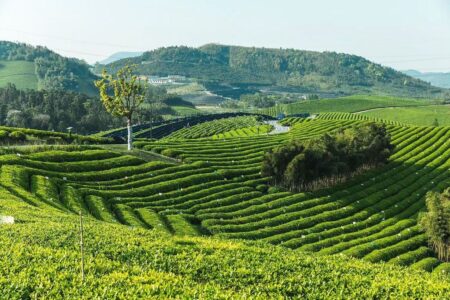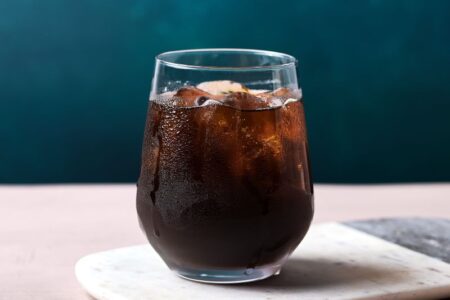Coffee M&As Accelerate & Show No Signs of Yielding

Recent mergers, acquisitions and overall growth across the coffee sector follow trends established by beer, soft drinks and other beverage industries.
By Rachel Northrop
Coffee brands are rapidly consolidating, with moves in 2018 that are reshaping the coffee landscape from roasting through consumer product distribution. Rabobank senior analyst for beverages, James Watson, sees the current market as a buy or be bought environment, with significant pressure on companies with 1-3 percent retail share. “If a [potential buyer] was interested and you’re not selling now, you will miss the boat. With only so many strategic buyers, there is pressure to sell early,” commented Watson.
There is also pressure on smaller roasters and brands from their competition. Watson noted, “If you’re a small player, it’s a fragmented market and competition is your size. They get bought, and you’ll be surrounded by giants.”
Farmer Brothers has been actively acquiring companies since 2016, first with China Mist tea, followed by West Coast Coffee and Boyd’s Coffee in 2017. “There’s a degree of investment needed to level up,” said David Robson, Farmer Brothers chief financial officer. “It’s harder for smaller players to compete, either they put in a lot more investment or be purchased.”
Savvy consumers are more educated to the nuances of coffee’s attributes, like flavours from origin-specific terroir, and to the variety of ways coffee can be prepared hot or cold at home or in a retail setting. They expect choice and quality. “Several years ago we leaned into the expectation that the market will get bigger and more sophisticated,” Robson commented. Farmer Brothers’ new headquarters in Northlake, Texas doubles its capacity to 200 million pounds of coffee per year.
Efficiency of scale is one of the main benefits large buyers offer to the smaller brands they acquire.
“What we bring to the table from an efficiency standpoint is this large capacity,” said Robson. “Acquisitions like Boyd’s work really well because we both have large national accounts, they have a direct to store delivery model like we do, and this continues cost effectiveness.”
Coffee experienced its artisan craft revolution in what is often described as “third wave” and “fourth wave” trends towards single origin offerings, transparent traceability, agricultural changes in varietal cultivation and processing, and a hands-on approach to roasting, packing and brewing in small, custom batches. For this craft segment to grow and serve the customers it draws, smaller players can take advantage of the cost-effective structures already in place by larger companies. This consolidation pathway closely mimics the transformation of craft beer’s recent trajectory.
Following Beer’s Path
“We see the beer segment as an example because it is consolidated so thoroughly,” noted Watson. He also highlighted the overlap between Anheuser-Busch InBev (ABI), the largest global beer brewing portfolio, and JAB Holding Company, one of the largest global coffee brand owners. In the last several years, and in just the United States, Luxembourg-based JAB has acquired Peet’s Coffee (Emeryville, California), Caribou Coffee (Minneapolis, Minnesota), Stumptown Coffee (Portland, Oregon), Intelligentsia Coffee (Chicago, Illinois), Keurig Green Mountain (Waterbury, Vermont) and Dr Pepper Snapple (Plano, Texas).
“ABI partners are also partners in JAB. Money is coming into JAB from ABI, and their philosophies are very similar. The comparison between coffee and beer is the ability to create value by consolidation,” said Watson.
Dodie Butler, director of mergers and acquisitions for Farmer Brothers, echoes this. “Coffee is similar to beer in that craft brands are regional, and they can be consolidated by larger players quickly.” Acquisition also includes the added value of expertise. “We found West Coast Coffee’s go-to-market model attractive. It’s synergistic and we can learn from them.”
RTD Coffee Replaces Soft Drinks
Coffee’s consolidation maneuvres parallel those taken in the past decade by beer, but the products sold by these new global brand owners will compete with soft drinks’ share of the market. “Keurig Dr Pepper is JAB’s biggest acquisition yet, blurring the line between coffee and soft drinks in general,” Watson explained. “Another risk to small coffee players is potential entry from large soft drink players.”
Consumers are moving away from sugar-heavy drinks like sodas and juice products towards healthier beverages with fewer calories and more plant-based ingredients. RTD coffee is well positioned to respond to consumer demand for grab-and-go cold drinks with reduced sugar content and natural ingredients. “Market data shows demand for healthy drinks is growing. Tea, coffee and water fit into that,” observed Farmer Brother’s Robson. “Everyone consuming those products are in their 20s.”
Swiss multinational Nestlé AG’s 2017 acquisition of Austin, Texas-based Chameleon Cold Brew and subsequent acquisition of Oakland, California-based Blue Bottle in 2017 supports the growth of premium RTD coffee. Watson noted, “Coffee is now a soft drink. Coffee companies have to ask, ‘Do you know how to have a branded cold drink on a grocery shelf?’”
Independent Expertise
La Colombe has successfully placed branded cold coffee drinks on grocery shelves, specifically with its canned Draft Latte products. This was accomplished through a new partnership rather than a merger or acquisition.
Hamdi Ulukaya, founder and CEO of Chobani yogurt, based in Norwich, New York, became Philadelphia, Pennsylvania-based La Colombe’s sole investor and majority owner, along with founders Todd Carmichael and JP Ilberti, in 2015. The press release announcing this change stated, “La Colombe is also developing plans to improve every segment of the coffee industry with high-quality offerings, including ground-breaking ready-to-drink, single serve, retail, e-commerce, and packaged coffee.”
Since that statement, RTD has emerged as the most transformed of those coffee segments, with cold brews, sparkling coffees, and coffee with milk beverages hitting the market aggressively, packed in glass, plastic bottles, cans, boxes, and pouches. Ulukaya’s investment came with his expertise in the single-serve cold dairy category, a space that overlaps with RTD three-in-one coffee’s growing popularity.
Changes in Distribution Patterns
La Colombe was able to use Ulukaya’s expertise and investment to adapt its distribution system to a new category of coffee products. The need for streamlined distribution is crucial to the viability of consolidated coffee, across cold RTD and roasted coffee channels.
Looking at soft drinks’ recent changes to anticipate coffee’s moves, Watson said that Coca-Cola went through a national refranchising. “National brands like Coke need coordinated national networks to distribute their brands. Giant national brands need giant national partners,” he explained. “It is hard to ask a retailer like Walmart to work with ten national distributors, so a coordinated roll out with a single partner makes it more feasible for new coffee products to be carried at national retailers.”
Farmer Brothers operates a channel-based direct to store delivery approach. “Customers demand to work with experts,” said Robson. “There’s a difference between selling to casinos versus convenience stores versus college campuses.” As coffee transforms from being a hot beverage brewed at home, in the workplace, or in a café setting, into a hot or cold beverage for any time of day, the networks for delivering coffee must update as well, something large global coffee companies have the infrastructure and capital to carry out.
“Coffee is consumed throughout the day,” noted Robson. “We are adding more cold brew, RTD, and iced drinks in a way that is easy for restaurant providers to serve. Coffee is one of the few areas where we are not driving down to the lowest price point. Customers have more sophisticated palates and are indifferent to a USD $0.25 price increase because they want to enjoy the product.”
Consolidated Outlook
As coffee enters new retail spaces, smaller roasters feel pressured to innovate beyond legacy operations. “For a traditional coffee roaster wholesaling to food service with some brands on the grocery shelf but no expertise in RTD, it might be difficult to do without a partner moving forward,” Watson concluded.
Watson’s comment came just days before Nestlé and Starbucks Coffee, based in Seattle, Washington, announced their partnership, an agreement that affords Nestlé the rights to market, sell and distribute Starbucks products across its channels. Starbucks’ press release referred to an “Alliance to leverage the complementary strengths, scale and sophistication of two of the world’s most recognized and respected consumer brands.”
Commenting on the partnership, Michael Schaefer, global lead, food & beverage at Euromonitor International, said, “For Nestlé, the deal represents a sea change in strategy – the company has long resisted allowing outside brands access to its Nespresso and Dolce Gusto pod platforms. While “Nespresso-compatible” products have existed in some markets for years, an official Starbucks partnership is something else altogether, with the Swiss company now devoting considerable resources to marketing an outside brand. With Starbucks coffee shops serving as a powerful brand driver in key emerging markets, this move allows access to an important and growing consumer base.”
To grow at a competitive pace, coffee roasters and retailers are seeing that they need to acquire new skill sets and modalities at a pace that demands partnering with other established companies.
Impacts along the Chain
While brands acquired and sold in the current flurry of consolidation maintain a bullish outlook on the overall growth of the coffee market, coffee producers and intermediaries are more reserved.
The financial pressure exerted on green coffee exporters and importers by consolidated buyers further strains producers at origin. By extending credit terms to up to a full year, green coffee traders have less liquidity to invest back in buying from producers. As climate change threatens producing regions and coffee agriculture requires more strategic investments to remain viable, the limited flexibility of the first buyers of green coffee threatens the economics of production.
The other potential direction the situation could take, however, is positive. With consolidated purchasing power, global coffee brand owners could source certified coffees and make investments in sustainable production at a scale that has previously been impossible.
Finally, in the consumer space, another question remains: can brands once synonymous with small-batch craftsmanship and local artisans retain their customer loyalty as they are folded into global coffee portfolios? The success of all coffee brands depends on consumers’ trust in the products.
The same consumers who demand healthier beverages are also those who demand ethical verifications. As coffee becomes less fragmented, these newly powerful brands will need to proceed wisely if their coffee products are to remain the continued RTD, any-time-of-day beverages of choice for discerning demographics of today’s newest coffee drinkers.
Rachel Northrop has been covering coffee for T&CTJ since 2012, while she lived in Latin America’s coffee lands writing When Coffee Speaks. She is based in Brooklyn, NY. She may be reached at [email protected].



